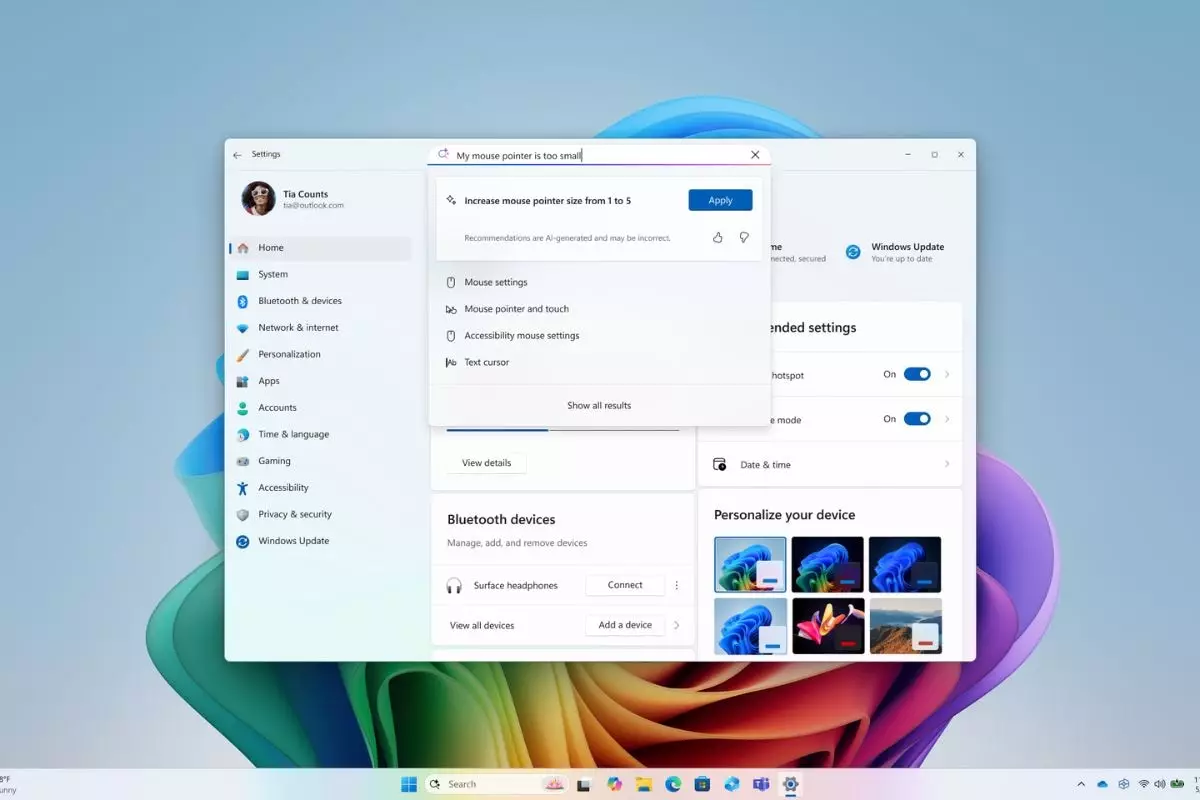Microsoft’s recent unveiling of its revolutionary AI model, Mu, marks a significant milestone in the development of local artificial intelligence. In an era where AI is often tethered to vast cloud infrastructures, Mu takes a refreshingly independent stance by running directly on compatible devices. This transition towards decentralized processing is not just a technical marvel; it represents a paradigm shift in how we interact with technology. The empowerment of user devices allows for faster processing and enhanced privacy, setting the stage for a more personalized computing experience.
What’s especially compelling about Mu is its integration within the new Windows 11 features, particularly the AI agents tool in the Settings menu. Users can now articulate tasks naturally, and the AI autonomously navigates through settings or executes commands. This not only enhances user experience but also marks a significant evolution in human-computer interaction. The implication here is transformational: an operating system that listens and adapts to our commands could redefine productivity, making mundane adjustments as effortless as a voice command.
Efficiency Meets Simplicity
Microsoft’s emphasis on efficiency is particularly noteworthy. The Mu small language model (SLM), with its 330 million parameters and operation on the neural processing unit (NPU), is a testament to the company’s commitment to making AI accessible without compromising performance. It is engineered to deliver responses exceeding 100 tokens per second, a feat that positions it well against the backdrop of user experience demands.
Distilling Mu from its Phi models, and leveraging advanced training techniques on Azure Machine Learning, showcases a sophisticated understanding of neural architecture. The choice of a transformer-based encoder-decoder structure balances complexity with performance; it not only optimizes the computation but does so in a way that paves the way for widespread applicability. While both sheer computational power and elegant design converge in this model, one can’t help but wonder whether Microsoft’s focus on hardware compatibility might inadvertently alienate some users with older devices.
Real-World Applicability of AI Models
Interestingly, the practical application of Mu has exposed a few flaws that highlight the challenges inherent in deploying AI models in real-world scenarios. Although the model performs admirably with well-phrased multi-word queries, its limitations become apparent with vague or ambiguous inputs. The fact that simple prompts like “brightness” may yield less accurate results is indicative of an underlying challenge posed by natural language processing—meaningful communication often demands context.
Moreover, the decision to continue showing keyword-based search results when queries are less precise raises questions about the balance Microsoft is attempting to strike between usability and sophistication. While the recognition of this gap is commendable, it may also suggest that Mu, at least in its current version, is not fully equipped to handle the nuance and richness of human language with the ease that we, as users, desire. More aggressive training methods could foster greater adaptability in the model, ensuring that it attains a broader understanding of user intent without requiring meticulous precision in phrasing.
Forging the Future of User Experience
Through its ongoing refinements, Microsoft is positioned to continuously enhance Mu’s capabilities, which is essential in an increasingly competitive landscape where user satisfaction is paramount. However, the tech giant must remain vigilant against complacency. As artificial intelligence continues to pervade our daily lives, the expectation for seamless integration and real-time responsiveness only escalates. Failing to meet these demands might lead consumers to question whether AI is really stepping up to enhance user experience or merely presenting a veneer of innovation.
Overall, Microsoft’s Mu heralds a new chapter in AI by embedding sophisticated language processing directly into users’ hands. While there are hurdles to surpass, the commitment to innovation and improvement signals a promising trajectory. Embracing decentralization and focusing on user needs above all can position Microsoft not just as a leader in technology but as a transformative force in how we experience digital environments.



Leave a Reply